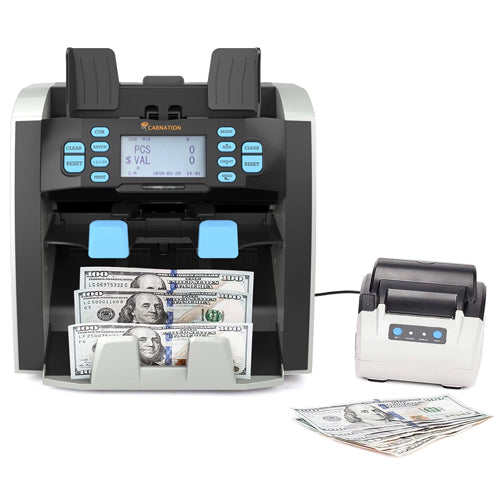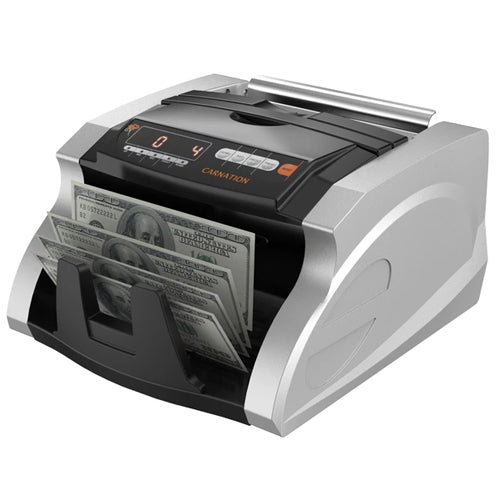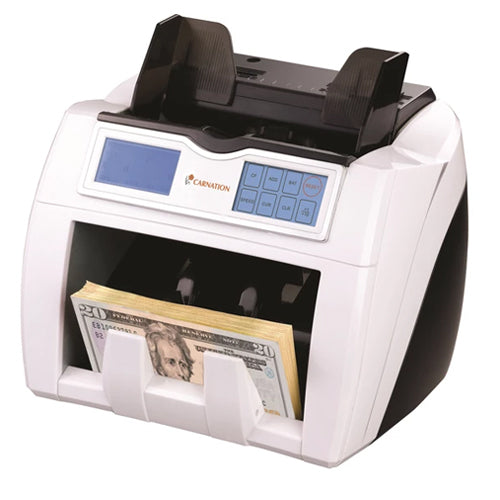Your cart is currently empty.

An Overview
Banks and businesses are always on the lookout for counterfeit currency. But sheer volume makes it impossible to check every bill by hand, and even with personal inspection, many fakes would still pass on undetected. Fortunately, a variety of security features are incorporated into the manufacturing and printing of modern paper money. And today’s money counting machines employ several counterfeit detection technologies to quickly and effectively pick out phony bills before they can move on through the economy. Here is a brief look at the three most common:
What to consider when looking for a Money Counting Machine

Ultraviolet (UV) Detection
Many countries today, including the US, UK and Canada, use inks containing ultraviolet florescent phosphors in the printing of their paper currencies. For example, US bills of $5 and up contain a vertical florescent stripe that is undetectable to the naked eye, but glows brightly when exposed under UV light. Ultraviolet is the single most common method of counterfeit bill detection used in money counting machines due to its simplicity, affordability and relative effectiveness. Replicating UV features by counterfeiters is difficult but not impossible, so while ultraviolet light is an excellent detection method, it cannot be considered as 100% effective.
Magnetic (MG) Detection
In addition to UV, most nations implement the use of magnetic inks in their paper currency. Money counting machines equipped with MG detection scan each bill for the magnetic properties in the traces of iron particles in the ink. As with UV, MG detection is relatively effective, but it does have its drawbacks. Some counterfeiters have discovered ways of using magnetic ink printers to fool MG detectors. Additionally, the magnetic properties in the bills can degrade over time and constant use, resulting in real currency being falsely identified as counterfeit.


Infrared (IR) Detection
Not quite as common as the UV and MG methods, infrared detection involves the use of IR inks which are currently extremely difficult if not impossible for counterfeiters to replicate. That is, currently. Currencies may be printed with IR inks that either reflect or absorb infrared light. Money counting machines with infrared technology use sensors that detect the presence of both types of IR inks, allowing them to identify legitimate currency by nation and denomination. And weed out the fakes.
Less common currency security technologies include color image sensing (CIS), infrared thickness (IR-T), metal thread coding (MT), watermarks, paper composition, among many others. Even holograms are beginning to find their way onto some notes. For most businesses, however, the use of one or more of these three common detection methods will prove to be both effective and affordable.






